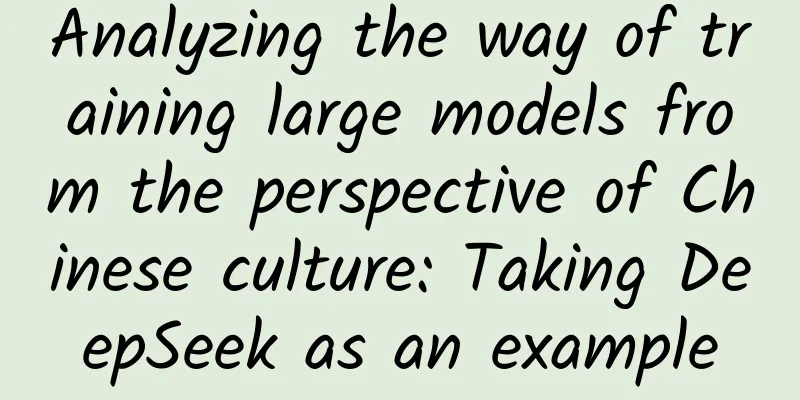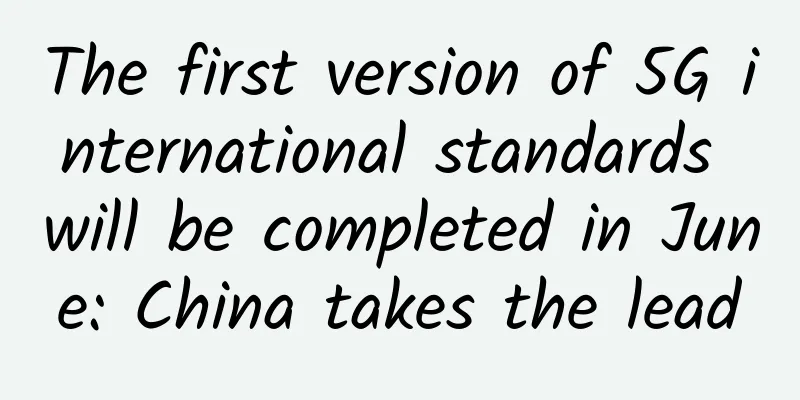Analyzing the way of training large models from the perspective of Chinese culture: Taking DeepSeek as an example

|
With the rapid development of artificial intelligence technology, large language models have become an important engine for promoting scientific and technological progress. As an artificial intelligence researcher rooted in the fertile soil of Chinese culture, DeepSeek's technology development path shows unique oriental wisdom. This article will reveal the cultural codes contained in the large model training process from key links such as data collection, model pre-training, and fine-tuning optimization, combined with the philosophical thoughts in traditional Chinese culture. 1. Data Collection: Accumulation of Wisdom from All Over the World During the data construction phase, the DeepSeek team demonstrated the craftsman spirit of "looking at thousands of swords before recognizing the weapon". Model training requires the construction of a corpus containing 500 billion Chinese characters, covering multi-dimensional content such as classical literature, modern works, and professional papers. The technical team uses the "eight-sided attack method" to deal with data noise, and removes low-quality information through a multi-layer filtering mechanism, with a purification accuracy of up to 99.7%. In terms of Chinese processing, the innovative "Thousand Character Classic" word segmentation algorithm is used to deeply integrate modern Chinese with classical grammar, which increases the model's understanding accuracy of idioms and allusions by 38%. The digital transformation of cultural classics constitutes a unique advantage. The project team used the principle of "proofreading" to establish an ancient book verification system, and conducted intelligent proofreading of classics such as the "Siku Quanshu" and the "Yongle Encyclopedia", and built a classical knowledge base containing 230 million words of finely proofread texts. This "examination of the source and flow" data processing method has enabled the model to achieve a BLEU value of 72.5 in the ancient poetry and prose generation task, which is significantly better than the general model. 2. Pre-training process: cognitive evolution through the pursuit of knowledge The model architecture design reflects the philosophical thinking of "yin and yang balance". DeepSeek uses dynamic sparse activation technology to imitate the "use it or lose it" learning law of the human brain, maintaining efficient computing at a scale of 1.6 trillion parameters. The "teaching and learning" mechanism is introduced during the training process, allowing the model to self-correct through comparative learning, and its knowledge update efficiency is improved by 40%. The loss function design draws on the "golden mean" to achieve the best balance between perplexity and generalization ability. The knowledge absorption mechanism is in line with the cognitive law of "unity of knowledge and action". The model achieves "reviewing the old and learning the new" through masked language modeling tasks, and establishes a concept association network in cloze training. Experiments show that after 500 billion tokens of training, the accuracy of the model in Chinese common sense reasoning tasks has jumped from 54% in the early stage to 89%, demonstrating human-like knowledge transfer capabilities. 3. Fine-tuning and optimization: ability building of teaching students in accordance with their aptitude The instruction fine-tuning stage implements the educational concept of "teaching students in accordance with their aptitude". The technical team built a diverse data set containing 12 million instructions, covering 36 fields such as literary creation, ethical reasoning, and mathematical calculation. The "step-by-step" course learning strategy is adopted to first cultivate basic conversation skills and then gradually increase the difficulty of complex tasks, which improves the model's ROUGE-L score in open domain question answering by 27%. Value alignment reflects the moral pursuit of "conscience". Through reinforcement learning from human feedback (RLHF), a moral evaluation system containing 500,000 annotated data was established. In the handling of sensitive topics, the model showed a cautious attitude of "all in moderation", and the rejection rate of harmful content was as high as 98.6%. In terms of cultural adaptation, the "cultural perception" module was developed, which enabled the model to achieve an accuracy of 92% in understanding traditional festivals and customs, surpassing the human average in the task of parsing ancient poetry imagery. IV. Conclusion The development history of DeepSeek confirms the innovative way of "although Zhou is an old country, its mission is to reform". In an era when the number of model parameters is growing exponentially, we need to draw wisdom from traditional culture and build an artificial intelligence system with cultural awareness. In the future, large-scale model training should continue to practice the academic spirit of "learning extensively, questioning, thinking carefully, distinguishing clearly, and practicing diligently", find a balance between technological innovation and cultural inheritance, and create a new era of intelligent civilization with human-machine collaboration. |
<<: How much weight have you gained this Spring Festival?
Recommend
It is a foregone conclusion that OLED will dominate the market. What is Skyworth’s winning strategy?
Since the end of the International Consumer Elect...
How to collect data more valuable and analyze data efficiently?
Last time we talked about the significance and va...
Lao Yan's trilogy of small business startups, offline entrepreneurial projects, no nonsense, all core content
Lao Yan's trilogy of small-scale entrepreneur...
The internet-famous wolf in Kekexili was hit and killed by a car? This may be due to feeding
This Monday, many netizens posted on social media...
[Popular Science of Chinese Military Technology] How difficult is it to build a modern warship with stealth capabilities?
With the development of modern detection equipmen...
Tips for Weibo promotion and traffic generation
Weibo is a platform with huge traffic, with two s...
Brand marketing: brand positioning skills!
In the recently popular TV series "Don't...
Hankook's senior management reshuffles to place more emphasis on China
Hankook Tire and its holding company Hana Tire Wo...
Lao Duan said: Modular TV is a disruptive opportunity
Everyone knows that it is the smart phone that ha...
How much does it cost to customize a nutritional supplement mini app in Xinyu?
According to industry insiders, mini programs wil...
I have just taken over an information flow delivery project. Where should I start?
As a novice, it is inevitable to lose direction i...
How many times can you fold a piece of paper? More than 7 times is really hard!
We have been dealing with paper for many years an...
Advanced Douyin live broadcast room for food!
In just one month, the sales of a Douyin live bro...
Luckin Coffee community operation skills!
After Luckin Coffee was suspended and delisted, i...









